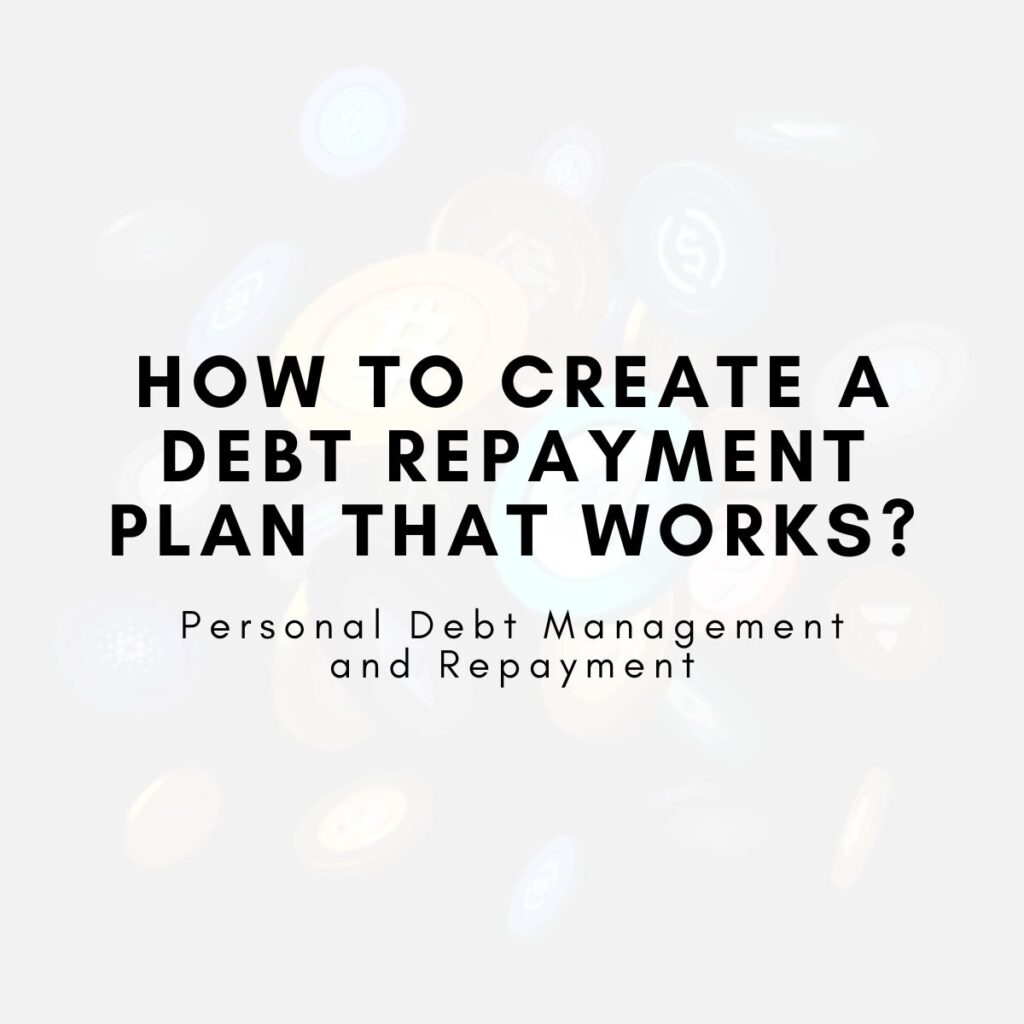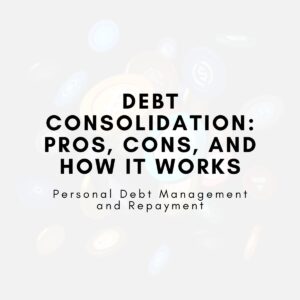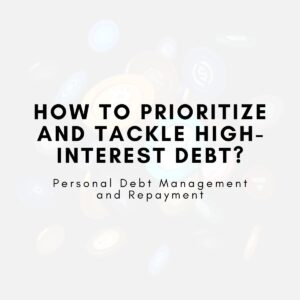
How can you create a debt repayment plan that works for you?
Creating a debt repayment plan that works involves a structured, realistic approach that suits your financial situation. By assessing your debt, setting clear goals, and using effective strategies like the snowball or avalanche method, you can eliminate your debt and regain control of your finances. In this guide, we’ll explore how to create a personalized debt repayment plan and stick to it successfully.
Summary Table: How to Create a Debt Repayment Plan That Works
| Strategy | Action | Example |
|---|---|---|
| 1. Assess Your Current Debt Situation | List all your debts, interest rates, and minimum payments to understand your total debt obligation. | Write down all debts (e.g., credit card, student loan, personal loan) and interest rates (e.g., 18% for credit cards). |
| 2. Set Clear and Achievable Goals | Define a timeline and monthly payment amount for each debt. | Set a goal to pay off $3,000 credit card debt in 12 months, paying $275 monthly. |
| 3. Choose a Debt Repayment Strategy | Choose between the Debt Snowball or Debt Avalanche method. | Use the snowball method to pay off $3,000 credit card debt first because it’s the smallest balance. |
| 4. Create a Realistic Budget | Track your income and expenses, and allocate funds for debt repayment. | If your income is $3,500 and expenses are $2,500, allocate $1,000 for debt repayment. |
| 5. Build an Emergency Fund | Save $500–$1,000 for emergencies to avoid going into further debt. | Set aside $100 each month until you build an emergency fund of $1,000. |
| 6. Stay Committed and Track Your Progress | Use debt repayment apps to track your progress and adjust your plan as needed. | Use an app like Mint to track your progress and celebrate milestones like paying off your first debt. |
This table provides a summary of the steps involved in creating a successful debt repayment plan, including key actions and examples to help guide you through the process.
Introduction
Managing debt is one of the most pressing financial challenges for many people. Whether you’re dealing with credit card debt, student loans, or personal loans, the burden of debt can feel overwhelming. The key to overcoming debt is not simply paying it off but creating a well-thought-out repayment plan that you can stick to.
In this guide, we’ll walk you through how to create a debt repayment plan that works for your unique financial situation. You’ll learn how to prioritize debts, choose the best repayment method, and establish a timeline for becoming debt-free. With the right strategy, discipline, and a positive mindset, you can eliminate your debt and build a better financial future.
1. Assess Your Current Debt Situation
The first step in creating an effective debt repayment plan is to assess your current debt situation. Understanding exactly how much debt you owe and the terms associated with each debt is crucial for creating a clear repayment strategy.
Why Assessing Your Debt Is Important
By thoroughly assessing your debt, you’ll gain clarity on how much you owe, the interest rates, and how long it will take to pay off each debt. This information will help you prioritize your debts and choose the best repayment method.
How to Assess Your Debt
- List All Debts: Write down every debt you have, including credit cards, loans, and mortgages.
- Note Interest Rates and Minimum Payments: Record the interest rates and minimum monthly payments for each debt.
- Total Your Debt: Add up the total amount of debt to understand your financial obligation.
Example:
Suppose you have three debts:
- Credit Card Debt: $3,000 at 18% interest
- Student Loan: $20,000 at 5% interest
- Personal Loan: $5,000 at 7% interest
Knowing these details will help you prioritize which debts to pay off first.
2. Set Clear and Achievable Goals
Once you’ve assessed your debt, the next step is to set clear and achievable goals. Having specific goals will motivate you and provide direction as you work toward becoming debt-free.
Why Goal-Setting Is Key
Clear financial goals make it easier to track your progress and stay motivated. Without defined goals, it can be easy to lose sight of the end result.
How to Set Your Debt Repayment Goals
- Set a Timeline: Determine when you want to be debt-free. For example, aim to pay off your credit card debt in 12 months.
- Determine Monthly Payment Goals: Calculate how much you need to pay each month to meet your goal.
- Prioritize High-Interest Debt: Focus on high-interest debt first to save money on interest over time.
Example:
If you owe $3,000 on a credit card with an 18% interest rate and you want to pay it off in 12 months, your goal would be to pay approximately $275 per month.
3. Choose a Debt Repayment Strategy
There are several strategies you can use to pay off your debts. The key is to choose the method that works best for your financial situation. The two most popular strategies are the Debt Snowball Method and the Debt Avalanche Method.
Debt Snowball Method
With the debt snowball method, you focus on paying off your smallest debt first while making minimum payments on the others. Once the smallest debt is paid off, you move to the next smallest, and so on. This method is often favored for its psychological benefits, as paying off smaller debts can provide quick wins and motivate you to continue.
Debt Avalanche Method
The debt avalanche method focuses on paying off the debt with the highest interest rate first, which will save you more money in the long term. Once the highest-interest debt is paid off, you move to the next highest, and so on.
Which Strategy Is Right for You?
- Snowball: Choose this if you need quick wins to stay motivated.
- Avalanche: Choose this if your primary goal is to save money on interest.
Example:
If you have the following debts:
- Credit Card Debt: $3,000 at 18%
- Student Loan: $20,000 at 5%
- Personal Loan: $5,000 at 7%
With the avalanche method, you would focus on the credit card debt first since it has the highest interest rate. The snowball method would have you focus on the credit card debt too but because it is the smallest balance.
4. Create a Realistic Budget
Creating a realistic budget is essential to ensure that you have enough money each month to make your debt payments while still covering your living expenses.
Why a Budget Is Crucial
Without a budget, it’s difficult to know how much money you can allocate toward debt repayment. A clear budget will help you prioritize your expenses and ensure you’re saving enough for your monthly payments.
How to Create a Budget for Debt Repayment
- Track Your Income and Expenses: List all your sources of income and monthly expenses.
- Cut Unnecessary Spending: Identify non-essential expenses you can reduce or eliminate to free up more money for debt repayment.
- Allocate Funds for Debt Payments: Prioritize debt repayment in your budget, setting aside the necessary amount each month.
Example:
If your monthly income is $3,500 and your total expenses are $2,500, you can allocate $1,000 toward debt repayment. If you’re following the snowball method, you would apply this to the smallest debt first.
5. Build an Emergency Fund
While paying off debt is important, it’s also essential to build a small emergency fund to avoid going deeper into debt if unexpected expenses arise.
Why an Emergency Fund Helps
Having an emergency fund provides a financial cushion that can help you handle unexpected costs like car repairs or medical bills without relying on credit cards.
How to Build Your Emergency Fund
- Start Small: Aim for $500–$1,000 to cover small emergencies.
- Save a Percentage of Your Income: Set aside a portion of your income each month until you reach your goal.
- Replenish the Fund if Used: If you dip into your emergency fund, prioritize replenishing it before focusing on extra debt repayment.
Example:
If you have $2,000 in monthly expenses and want to build a $1,000 emergency fund, set aside $100 each month until you reach your target.
6. Stay Committed and Track Your Progress
Staying committed to your debt repayment plan is key to success. Regularly tracking your progress will help you stay motivated and ensure you’re on the right path.
Why Tracking Progress Matters
Tracking your progress helps you see how much you’ve accomplished and what remains to be done. This visual representation can keep you motivated and focused on your goals.
How to Track Your Debt Repayment Progress
- Use Debt Repayment Apps: Apps like Debt Payoff Planner or Mint allow you to track your progress and stay on top of payments.
- Celebrate Milestones: Celebrate when you pay off a debt, no matter how small, to keep your momentum going.
- Review and Adjust as Needed: Regularly revisit your plan to ensure it’s still realistic and adjust if necessary.
Example:
If you pay off your credit card debt early, you can redirect those funds to the next debt on your list, speeding up your overall repayment process.
Conclusion
Creating a debt repayment plan that works requires a clear understanding of your financial situation, a structured strategy, and consistent effort. By assessing your debt, setting realistic goals, choosing the right repayment strategy, sticking to a budget, and tracking your progress, you can achieve financial freedom. It’s important to remain disciplined and flexible, as your situation may change. With determination and the right plan, you can successfully pay off your debt and move toward a more secure financial future.
Key Takeaways
- Assess your debt by listing all obligations and noting interest rates and minimum payments.
- Set clear, achievable goals with a defined timeline for repayment.
- Choose a debt repayment strategy that suits your financial situation (Snowball or Avalanche).
- Create and follow a realistic budget to ensure enough funds for debt repayment.
- Build an emergency fund to avoid further debt accumulation.
- Track your progress regularly and stay committed to your plan.




